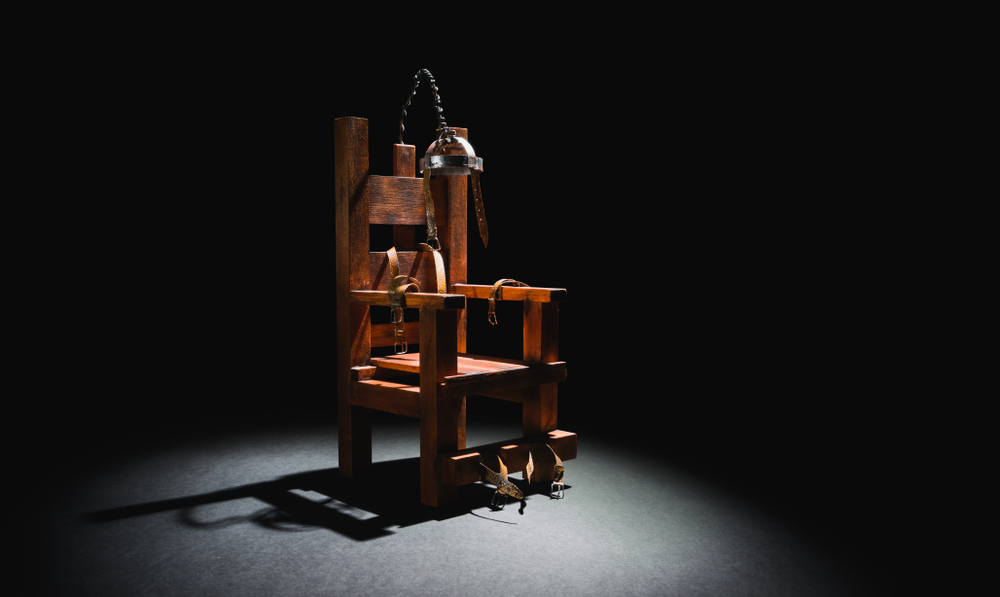Numbers of women behind bars are soaring, report says
Over the past 35 years, drugs have played a significant role in the incarceration of women, resulting in a 216% increase in arrests during that period, according to the Prison Policy Initiative, a nonprofit that advocates for women behind bars and tells the story of mass incarceration. That makes women the fastest-growing segment of the prison population.
The nonprofit’s new briefing says that from 2009 to 2018, men’s incarceration in city and county jails dropped by 7.5%, while women’s incarceration increased by 23%.

Opioids and the inability to pay bail both contributed to these increases, according to the briefing. Women’s opioid overdose deaths rose 600% from 1999 to 2016, compared to a 312% increase for men over the same period. Some 70% of women serving sentences in jails or prisons struggle with drug dependence.
RELATED: Feds herald first notable decrease in violent crime since 2015
RELATED: Race still a major factor in death sentences, study finds
Recent reductions in state and federal prison populations have mostly affected men.
Compiling this data in one report helps advocates in numerous ways, said author Tianna Herring, a research associate with Prison Policy Initiative.

“Having as much information as possible is really important for advocates because it gets them the data they need to advocate for the issues they want to see change,” she said. “Pointing to direct statistics and representatives and such, it makes it easier to demonstrate there is actually an issue.”
One such issue is pretrial detention for drug offenses.
“Pretrial is particularly important for women because as we see, half the women are incarcerated in jails, which is unique, and a majority of them are being held pretrial which takes them away from their families and jobs,” she said.
They are more likely to be the primary caregiver, lose their jobs, have their kids put into foster care, or be unable to pay the rent.
Herring saw the issue in her own family growing up. Her younger brother was incarcerated 35 times before 18, she said.
“It had a big impact on my family,” a low-income family of color. “As the first in my family to go to college, it weighed on my mind. It is how I ended up here. I wrote a thesis in college on incarceration. It really aligned with my interests.”
Mass incarceration is a massive issue in the U.S. and this increased incarceration for women affects six million kids who have lost a parent to jail or prison, the Annie E. Casey Foundation reports. As of 2017, close to one in five children lost a parent to incarceration in Arkansas. Other states fell close behind, with 15% in Kentucky, 14% in Louisiana, 13% in Arizona and 13% in Tennessee.
The foundation advocates for states to invest more resources to support family members left behind, stating that incarceration of a parent can be just as devastating on a family as abuse or domestic violence.
The Prison Policy Initiative briefing provides a view of 231,000 incarcerated women in the United States and how they fit into the broader picture of correctional control. It pulls together data from government agencies and calculates, by specific offense, where the women are housed. The Prison Policy Initiative produced the report in collaboration with the ACLU’s Campaign for Smart Justice.
According to the report, the United States is one of the world’s top incarcerators and determining where people are held could help change that.
Here is the breakdown of where women are incarcerated.
Local jails: 101,000
State prisons: 99,000
Federal prisons and jails: 16,000
Immigration detention: 7,700
Youth facilities: 6,600
According to the report, the incarceration of women, who are disproportionately held in local jails, has grown at twice the pace of men in recent years. According to the initiative, why this is occurring remains mostly unknown due to a shortage of data. “Frustratingly, even as this report is updated every year, it is not a direct tool for tracking changes in women’s incarceration over time because we are forced to rely on the limited sources available, which are neither updated regularly nor always compatible across years.”
Just as staggering as the number of women in jails is the fact that most have not been convicted. One-quarter of them have not gone to trial. “Even once convicted, the system funnels women into jails: About a quarter of convicted incarcerated women are held in jails, compared to about 10% of all people incarcerated with a conviction,” the report states. It notes that jails tend to make it more difficult for inmates to communicate with their families. Some do not allow any mail other than a postcard.
Phone calls are three times more expensive from local jails than from prisons. “This is especially troubling, given that 80% of women in jails are mothers, and most of them are primary caretakers of their children. Thus, children are particularly susceptible to the domino effect of burdens placed on incarcerated women” the report states.
Avoiding jail while awaiting trial is a particular challenge for women. There is no reason to believe judges see them as flight risks since they tend to be the primary caregivers for their families. According to the report, the more feasible answer is that incarcerated women with lower incomes than incarcerated men are less likely to have the funds to pay bail. Typical bail amounts to a full year’s pay for some women.
The report also highlights an inadequate number of programs in jails and prisons to address drug addiction, Herring said.
“We know it is a public health issue, but the response is not adequate because jails and prisons are not equipped to handle the issue,’’ she said. ‘’They are punishing people for their illness, their addiction, rather than acknowledging it” and offering help.
“I think one of the things unexpected in this report is that we figured that a lot of women in jails would be struggling with drug abuse and dependence, but the sheer numbers were pretty surprising to me,” Herring said. ‘’There are 70% struggling with drug abuse. And it’s likely that number is even higher,” since the data came from the Bureau of Justice Statistics, which does not even include people jailed pretrial. “It is a widespread problem and a very big deal.”

















